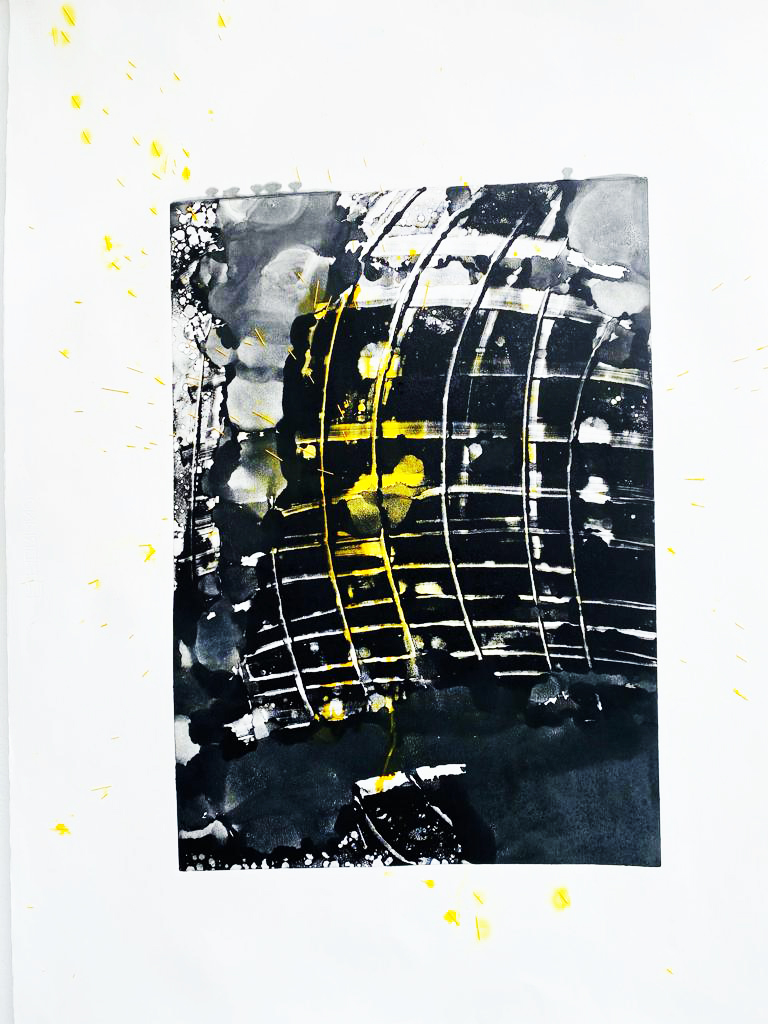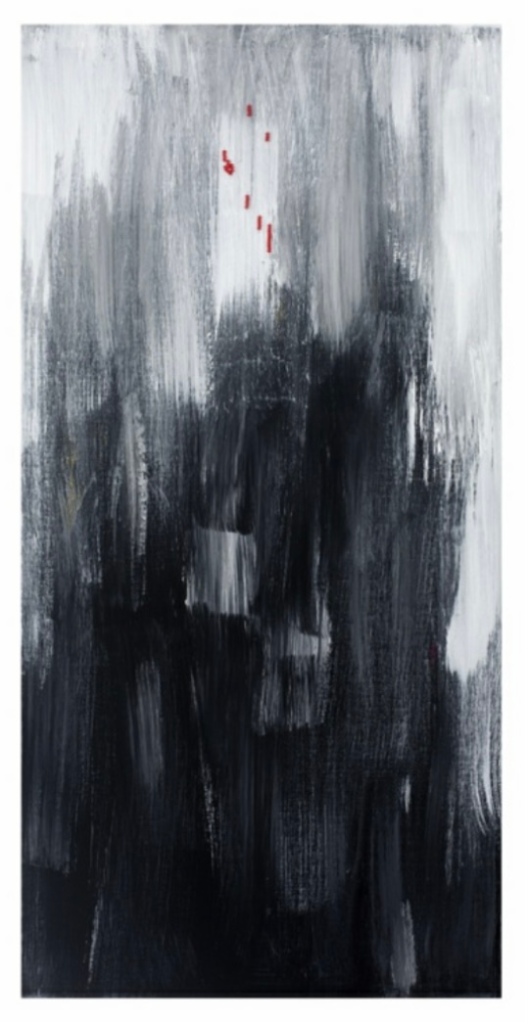I
Prologue
[O]n the 13 April I had the privilege of being the official opening speaker at the launch of the exhibition Crossroads // Tsela Tse Pedi at The Viewing Room, St. Lorient Fashion and Art Gallery, the Brooklyn Circle. I usually avoid being put in such a position. The responsibility of opening an exhibition officially to the public carries with it an assurance to those in attendance that they have come to the right place, especially when other exhibitions of equal importance might be opening elsewhere around the same time.
Visiting the gallery a day before the opening, I spent about an hour and half looking and interacting with the artworks on show as part of preparing my impressions of the artworks for the opening speech. What I encountered was an exhibition showcasing a diverse throng of artistic concerns and art media expositions which are guided by a commitment to media application and its exploration. There is also a continuous engagement and articulation of the surface area as a persistent vehicle for relaying the content to the viewer.
At the end of delivering the opening speech that morning the curator Ms. Kutlwano Monyai and, the gallery proprietor, Ms. Lucy Anastasiadis requested to have the speech made available to the artists and ultimately to the public. This present blogpost is about fulfilling that promised. It is with great pleasure that I herein share the opening speech with you in its original format. Well …sort of. A few minutes prior to the opening I opted to use the last paragraph as the opening paragraph of the speech. The intention was to build a crescendo right at the outset of the speech. And to reset the build-up, this crescendo, in the successive paragraph which was the first paragraph in the earlier draft version, now relegated to a second paragraph. Whether I succeeded in building a crescendo that wither away as reading progresses I leave the judging to the reader.
I would like to congratulate Ms. Kutlwnao Monyai for putting up a thought-provoking exhibition of voices in different stages of burgeoning art careers. May this exhibition be a continuation of an engagement with the evolving nature of the visual art object.
II
[A]t the crossroads, though we may be there physically, when multiple options opens-up before us on how to progress further through existence. We are there psychologically (See the work of Tlatsi, Moses, Oosthuysen and Mosifani); because we are an amalgamation of mental constructs. We stand at the crossroads as spirits (See the work of Mashigo and Lodi), because when the spirit leaves the body nothing but a husk is left behind. We do stand there as social beings as well (see the work of Mphela and Rikhotso) for we are part of a bigger, intricately complicated world and it is our being’s journey that interrogates our existence whether midway the two points of departure and arrival or at the crossroads of our variable journeys.

Good morning, ladies and gentlemen. Thank you for joining us this morning for the opening of this interesting exhibition here at the Viewing Room, St. Lorient Fashion and Art Gallery. In my reviewing of this exhibition for the purpose of this opening, I noted the geographical diverse backgrounds and artistic practices of the ensemble of artists brought together for the interrogation of the theme of this exhibition. I will return to the word ‘interesting’ closer to the conclusion of this exhibition’s opening remarks. My approach in opening this exhibition, as I remarked to the curator yesterday during a short talk after looking at the exhibition for the purpose of this opening. Is to make sense of the response to the call-out by delving into the work comprising this exhibition. To give my impressions.
Thato Tlatsi’s figures are imposing and haunting in their foreshortening gestures and flowing presentations of the picture plane. They defy the straight jacket stretched canvas framing and mimic flags in their flowing. They can serve as flags that symbolises the human spirits wrestle with existence itself. The figure represented in the work ‘In the dark’ (See Figure 1) crawls and gropes away at the canvas on which they have been represented. This frantic reaction is turned inward in the works Restless abandon, Seated figure and Shadow work I. In the latter work the figure punches at its own shadow alluding to self-confrontation.

The work of Masindi Mbolekwa dramatizes the theatre of human existence against a backdrop of sepia and black block backgrounds that imbibes a nostalgic look and feel in the depicted. Although overtly figurative in its content, the setting is not specified and figures faces are obscured. This delimits facial expression rendering which, as a device, can reveal the emotional state of what the characters in these compositions are going through. We are left to work with the activities and gestures inherent in what visual narrative the artist has opted to advance. This encourages the viewer to ponder on the figurative composition itself and the content they heave up. An enigmatic content that hovers closer to spirituality and identity. See Behest: Kufa Konke Kuphele Ngawe (See figure 2) and Andilwe as well as The blessing.

This encounter with an unclarified background as a vehicle is earlier encountered in the gallery space with Ditiro Mashigo’s abstract screen prints and embroidery where lines, with a touch of warm colours, red and yellow, curving (See Thupa II), Trickling lines, (See Thupa I) and crisscrossing lines (See in the work Ancient History) interact and merge with the background (See Figure 3). The background in these three highlighted artworks is accentuated by embroidery. The manner of background rendering in Mashigo’s compositions invites a closer inspection to explore lines and texture. With Mbolekwa the contrary applies. It is what occurs in the mid and foreground that takes precedence.

In Lerato Lodi’s work Ditaola II a minutiae trickle of crimson red beads pervades an almost black background that has a whitewash paint in broad brushstrokes stopped midday in what seem to have been an effort to cover the picture plane. This is an honest remark in the artwork as a text alluding to the fact that what we are seeing is a process of confluence of materials to conjure-up an artwork. Interestingly, a closer scrutiny of the picture plane due to the invitation of brushstrokes reveals a white fragile thread held in place by what seem to be a single white bead. A slip into the abstract nature of the work occurs herein and marks of yellow become apparent in this abstract composition. In Ditaola I, a monoprint, is on a league of its own. The imprint of Ntsu snuff lid pulls affinity firstly to the use of snuff in calming the nerves, secondly as an offering to the divine and as inducing a trance state in spiritual practices.

It is joyful to encounter Theophelus Rikhotso work in this exhibition (See figure 5). The icons encountered in Mikhonzo ya vakokwani is readily identifiable here; pied crow, shovels, shebelani regalia and the rural setting repertoire. The introduction of the yellow colour in the composition deviates from what we have come to expect from the artist. The effect of the yellow colour pins a starting point in viewing the works that Rikhotso has contributed to this exhibition. The works Ancestral tapestry, Shovels, Memories of home I and II are all wrapped up in a desolate silence while Rhythm evolution defies that silence in its visual narrative gesture and scale compared to the aforementioned works.

A quick browse through this non-cube gallery may overlook Andrea Moses’s submission Girl’s scout: knots beyond the throat. For the work almost look like a curtain. Knots done by other people are difficult to undo. And I think it has something to do with memory. Prior memory of a knot tied is handy in undoing a knot otherwise in our undoing of a knot tied by someone else we may just hover closer to jamming the knot. The curtain picture plane invites close scrutiny and the interaction with the work reveals unsettling undertones as groping hands become noticeable on the surface.

Curatorially speaking, this unsettling undertones are smothered by Tumelo Mphela’s submission. In the work She got power a little girl dwarfs a modest house and a mining truck (See figure 7). With a scant contextual background, a stark contrast of scale is rendered where the house, the girl and the truck are caught up in a triadic interplay that draws the viewer into the darkened background picture plane through the girls direct gaze. The matchstick that the girl is carrying accentuates the title of the work. Fire has the power to nurture and annihilate.

Moving on to two of Naledi Mosifani’s works, Imfihlo and Memeza, these workds stand at polar opposite to one another as the exhibition simmers in tone in its curatorial approach. In Infihlo the protagonist is hidden by strands of zips halloed by a bouquet of flowers and in Memeza the zips are pulled away, the facial expression and raised hands of the figure accentuates the almost perceptible shout. There is something symbolic about the host of zips here as a reference to shut out, closing, restriction, particularly in the Imfihlo composition. There is a defiance against this shutting-off restriction in Memeza (See figure 8).

Finally, the work of Zandri Oosthuysen thrust the viewer into pure abstraction. Particularly with the drawings. It is only through the consideration of the interplay between the titles of the work such as Death Stench, Death for thought, Fresh decay and Dressed and Undressed that the underlyingmessage can be translated into what we find when we cut the skin, whether animal or man, in varying stages of death.


